Are you looking for insightful lead generation statistics to improve your customer acquisition strategies and grow your business this year?
With so many channels available to attract new leads – email, content, social media, paid ads, influencer marketing, and live chat to name but a few – choosing the right mix of marketing channels is crucial for your business’s growth.
To aid your decision-making, we’ve compiled over 120 statistics to help you gain a deeper understanding of lead generation. Use this research to guide you and to help you select the most effective strategies for your business.
Fascinating Lead Generation Statistics and Trends
General Lead Generation Statistics
Lead generation tactics and best practices are constantly evolving as customer needs and expectations change and the technology available to us grows and becomes more sophisticated.
Take a look through these lead generation statistics highlights to get a general idea of how businesses are using lead generation, their biggest wins and challenges, and how lead generation fits into their overall marketing strategy.
1. The global lead generation market is expected to grow from US$ 3,103.8 million in 2021 to US$ 9,589.1 million by 2028. (Research and Markets)

2. 61% of marketers said their biggest growth-related challenge is generating leads (Hubspot)
3. 91% of marketers say that lead generation is their most important goal. (Ruler Analytics)
4. 84% of marketers use form submissions to generate leads (Ruler Analytics)
You can easily create a lead form using the WPForms Lead Forms addon. It lets you create a multi-step form designed for maximum completions and conversions and embed it anywhere on your WordPress site. The result is a user-friendly, attractive interface that helps to prevent form abandonment.
5. 66% of marketers say that the quality of leads is one of the most important metrics to measure the success of their content marketing campaigns, while 43% agree that the quantity of leads provides meaningful insights. (Content Marketing Institute)
6. 35% of marketing decision-makers said that their lead generation strategy benefited most from improving marketing data quality. (Marketing Profs)
7. 80% of new leads never convert into sales (Zendesk)

8. 27% of marketers consider lead generation one of their most important metrics for measuring the effectiveness of their content marketing strategy (Hubspot)
9. The average cost per lead varies by industry. The highest costs per lead are found in the higher education industry, with an average cost per lead of $984. Other industries with the most expensive cost per lead include financial and legal services, oil& gas, IT, software development, and transport & logistics. Industries with the lowest average cost per lead include eCommerce and HVAC at an average of $91 and $92 per lead, respectively (FirstPageSage)

10. 53% of marketers spend at least half of their marketing budget on generating leads (BrightTALK)
11. In 2023, Web conversions saw a nearly 11% increase, and inbound leads increased by 6.66%. (Hubspot)
Content Marketing for Customer Acquisition Statistics
High-quality content has become a cornerstone in attracting and engaging customers. Here, we explore statistics that reveal the effectiveness of content marketing in drawing in and retaining customer interest.
1. 79% of brands use content to generate leads (Adobe)
2. 56% of marketers find targeted content the most important element of a lead nurturing program. (Ascend2)
3. Companies that maintain a blog generate 67% more leads than those that do not. (Demand Metric)
4. Content marketing is the primary channel for generating leads, accounting for over half of lead acquisition methods. Additionally, over 70% of industry professionals believe blogging has become more effective in generating leads (Databox)
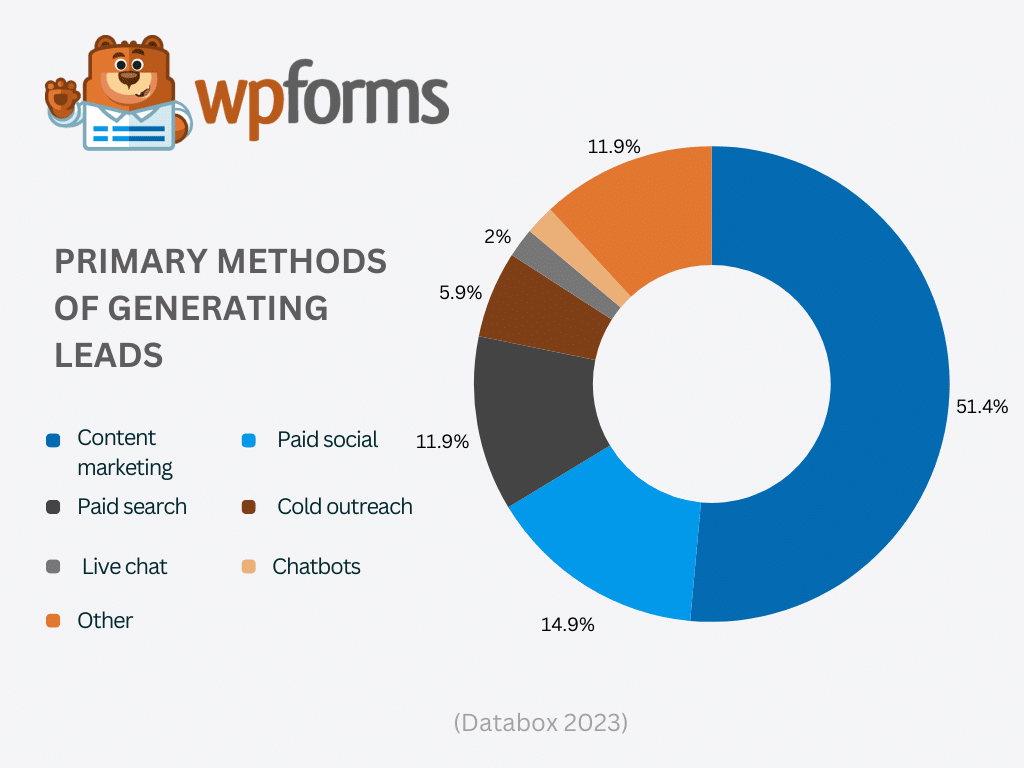
5. Content marketing is a highly effective inbound marketing tactic, generating three times as many prospective leads as outbound marketing and costs 62% less (Salesmate)
6. 43% of marketers say creating engaging and targeted content is their biggest challenge in lead nurturing (Ascend2)
7. Companies that publish at least 16 blog posts a month generate 4.5x more leads than those that only publish 4 times a month or less. (Marketing Insider Group)

8. Companies that have published at least 400 blog posts receive more than 3.5x the number of leads than companies with fewer than 100 posts on their blog (Marketing Insider Group)
9. 85% of B2B marketers use content to generate sales leads, compared to just 60% of B2C marketers (Exploding Topics)
10. 51% of companies say updating old content has proven to be the most efficient tactic for their content marketing strategy. (G2)
Email Marketing Statistics for Lead Generation
Email marketing remains a vital tool in the lead generation toolkit. These statistics look at data exploring open rates, click-through rates, and the overall effectiveness of email campaigns in nurturing leads and driving conversions.
1. Lead nurturing emails get 4 to 10 times the response rate compared to standalone email blasts. (Zendesk)
2. The average email open rate across industries is 21.33%, providing a significant opportunity to engage with a wide audience. (Mailchimp)

3. Email marketing has an ROI of $36 for every $1 spent. (Litmus)
4. Segmented, targeted, and personalized email campaigns generate 58% of all email marketing revenue. (Instapage)
5. 59% of consumers say that marketing emails influence their purchase decisions. (SaleCycle)
6. Regular list hygiene can lead to a 7.5% decrease in unsubscribe rates. (Hubspot)
7. Regularly running A/B tests on emails improves ROI by an average of 82%. (Litmus)

8. Nearly 40% of people who click on an automated email go on to make a purchase. (Omnisend)
9. 53% of marketers say email has been the most effective channel for early-stage lead generation. (Demand Gen Report)
10. 50% of consumers buy from marketing emails at least once a month. (SaleCycle)
SEO and Organic Search Statistics
Organic search and SEO are critical for online visibility and lead generation. Take a look at these statistics to understand the impact of search engine rankings, the effectiveness of various SEO tactics, and how organic search leads compare in quality and lead conversion potential.
1. 68% of online experiences begin with a search engine. (BrightEdge)
2. 29% of marketers use search engine optimization techniques on their website and blog to attract and convert leads. (Hubspot)
3. SEO is considered the top source of high-scoring leads, with 35% of marketers attributing their most valuable leads to this channel. (Databox)
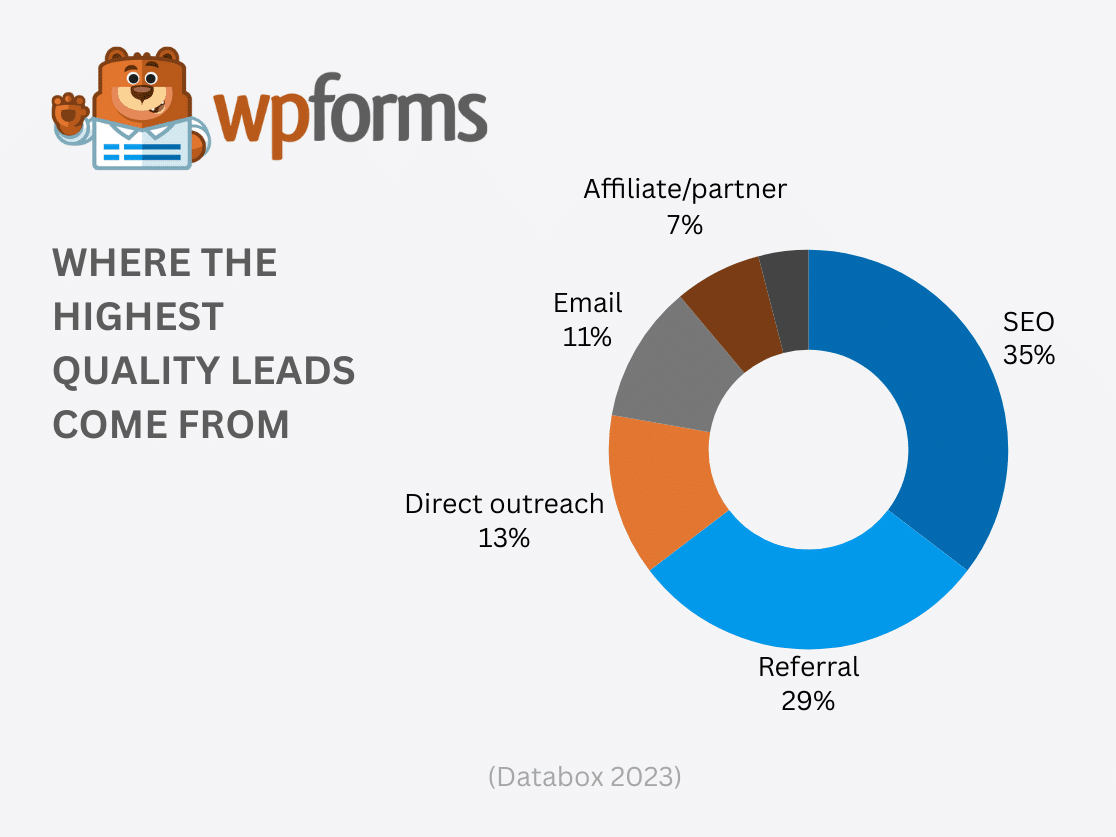
4. 55% of marketers agree that publishing more content drives higher organic rankings. (SEMRush)
5. Updating and republishing old blog posts with new content and images can more than double organic traffic. (Backlinko)
6. 27% of marketers say that organic search generated the majority of their leads. (Ruler Analytics)
7. 29% of marketers are exploring using social media for targeted ads in preparation for third-party cookies to be phased out. (Hubspot)
8. SEO leads are 8x more likely to close than those generated by traditional marketing. (Web FX)
9. SEO drives 1,000%+ more traffic than organic social media. (BrightEdge)
Social Media for Lead Generation in Numbers
Love it or hate it, in today’s world social media is inescapable. But is your social media lead gen strategy making a difference to your bottom line or are you wasting your time on low-impact tasks and vanity metrics?
Here we offer statistics on how different social media platforms contribute to lead generation, discussing user engagement, content virality, and the effectiveness of social media advertising.
1. 20% of social media marketers say creating content that generates leads is their biggest challenge. (Hubspot)
2. Potential for lead generation was the most commonly cited reason for investing in new social media platforms in 2023. (Statista)

3. 30% of Gen Z and Millennials have bought a product directly on social media in the past three months. (Hubspot)
4. Facebook is the most popular platform for digital marketing, used by 64% of brands. Instagram comes in second, with YouTube in third place. Facebook was also voted top in terms of ROI with 22% of marketers reporting they’d had the best results on the platform. (Hubspot)
5. Over 50% of social media marketers want to know the best ways to improve sales and generate leads. (Social Media Examiner)
6. 64% of marketers say generating leads is one of the main benefits of using social media. (Social Media Examiner)
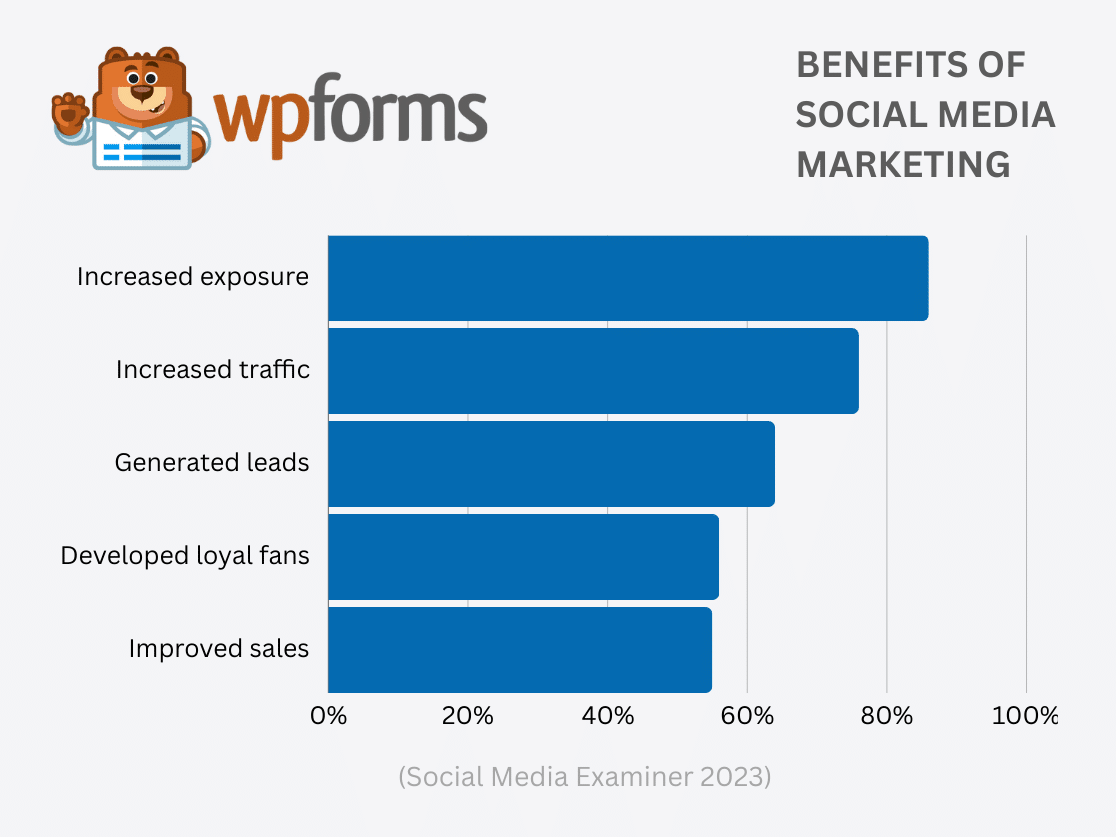
7. Marketers get better at generating leads the longer they use social platforms. Only 40% of marketers using a platform for less than a year agree it is effective for generating leads, compared to 73% for those who have been using the platform for 4 years. (Social Media Examiner)
8. Facebook and LinkedIn contribute the most leads for marketers, with 43% and 42% of marketers respectively naming them as their top platforms for lead generation. (Social Media Examiner)
9. 23% of brands say Instagram has proven to be the best source of ROI, engagement, and quality leads. (Hubspot)

10. 25% of brands are selling directly on Social media platforms like Instagram shops. (Hubspot)
11. 42% of marketers use TikTok already, and more than half of them (56%) plan to increase their investment in TikTok. (Hubspot)
12. 90% of social media marketers agree that building an active online community is essential to success. (Hubspot)
13. 80% of social media marketers say consumers will buy products directly within social apps more often than on brands’ websites or third-party websites like Amazon. (Hubspot)
14. 35% of Gen Zers say they use social media primarily to keep up with brands and products. (Hubspot)
15. 23% of Gen Zers have contacted a brand for customer service through their social media account in the last 3 months. (Hubspot)

16. 87% of social media marketers agree consumers will start searching for brands on social media more often than through search engines. (Hubspot)
17. 21% of marketers believe that social media significantly impacts meeting their lead generation and brand awareness goals. (Salesmate)
PPC and Paid Advertising for Lead Generation Statistics
Pay-per-click (PPC) and other forms of paid advertising are powerful drivers of lead generation, but they can also have the biggest impact on your budget. Here, we present data on the effectiveness of these strategies, including click-through rates, conversion rates, and ROI across various digital platforms.
1. Businesses typically earn an average of $2 in income for every $1 they spend in Google Ads. (Google Economic Impact Report)
2. The average conversion rate of Google search advertising is just over 7%, with an average cost per click of $4.22. (Wordstream)
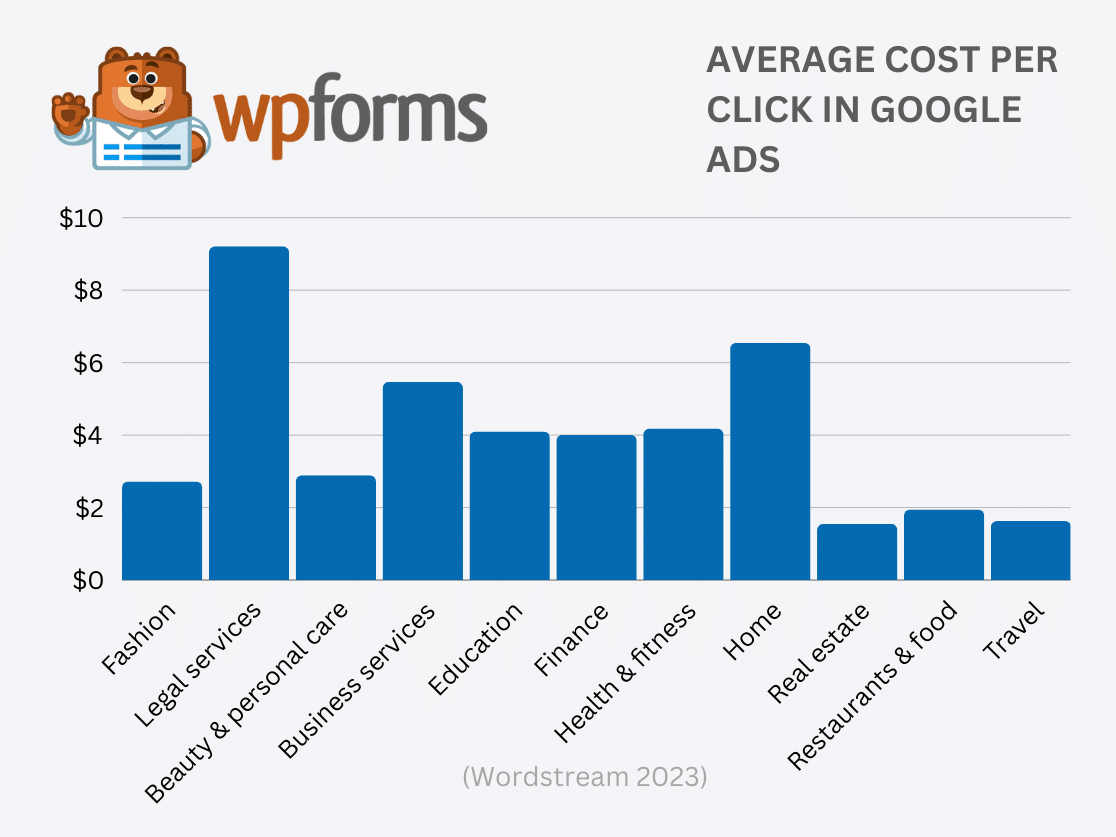
3. Industries that see the highest conversion rate for search ads include animals and pets (13.41%), physicians and surgeons (13.12%), and automotive (12.61%). (Wordstream)
4. The average click-through rate of Google ads is 6.11%. (Wordstream)
5. 65% of all high-intent searches (searches with the intent to purchase) result in an ad click. (Optiminder)
6. The average click-through rate in Facebook ads for lead gen campaigns across all industries is 2.50%. (WordStream)
7. The average conversion rate in Facebook ads for lead gen campaigns is 8.25%. (WordStream)
8. Google Ads is the most popular lead-generation channel for B2B marketers with 50% using it. Furthermore, almost 70% of marketers believe that Google Search Ads are the top-performing channel for conversions from paid traffic sources. (Databox)
9. Almost 70% of PPC experts believe that Google Search Ads are the top-performing channel when it comes to conversions among paid traffic sources. (Databox)
10. 74% of brands say PPC is a major driver for their business. 64% of brands plan to increase their PPC budget in the next year. (Lunio)
11. Advertisers are projected to spend over $306 billion on search advertising globally in 2024. (Statista)
Video, Webinar, and Podcast Trends for Lead Generation
Webinars and podcasts are increasingly popular for lead generation, offering unique opportunities for engagement. These statistics help us to understand their effectiveness in attracting and nurturing leads and developing content strategies that resonate with audiences.
1. Over 40% of marketers say that webinars and online events performed better than their other content assets in the last 12 months. (Content Marketing Institute)
2. 45% of B2B marketers agree that webinars are the Most effective top-of-the-sales-funnel demand generation tactic. Virtual events and digital experiences come in second, with 35% citing them as the most effective demand-generation tactic. (Statista)

3. 80% of marketers held live events in 2022. (Hubspot)
4. 59% of marketers plan on increasing their YouTube organic activities over the next 12 months. (Social Media Examiner)
5. Podcasts now reach over 100 million Americans every month. (Edison Research)
6. 90% of marketers using short-form video marketing in 2023 say they will increase or maintain their investment in 2024. (Hubspot)
7. 25% of marketers agree that video content offers the highest ROI of any of their content formats. (Hubspot)
8. More than half (53%) of marketers say webinar landing pages generate the most high-quality leads. (Demand Gen Report)
9. Videos appear on 10% of all search engine results pages. (Backlinko)
Live Chat Lead Generation Stats
Live chat offers real-time engagement with potential customers. This section examines its effectiveness in lead generation, looking at customer satisfaction rates, and how live chat can accelerate the journey from visitor to lead.
1. 26% of business-to-business (B2B) marketers using chatbots in their marketing programs gained between 10 and 20 percent more lead generation volumes (Statista)
2. 81% of customers rate their live chat interactions as positive (Tidio)
3. 41% of customers prefer live chat over any other customer service channel such as telephone or email. (Tidio)

4. 38% of consumers are more likely to buy from a company if they offer live chat support. (Kayako)
5. Customers who use live chat are 513% more likely to buy. (Tidio)
6. Adding live chat to a website will typically increase conversions by 20%. (Campaign Monitor)
7. 47% of consumers are open to buying items through a chatbot. (HubSpot)
8. 60% of customers believe customer service should be available 24/7. (CM)
9. 33% of marketers use live chat as a conversion tool. (Ruler Analytics)
10. 29% of marketers are using social media direct messages and 29% are using mobile messaging (SMS, WhatsApp etc) to provide customer service. (Hubspot)
11. More than one in five Gen-Zers and nearly 25% of Millennials report having directly contacted a brand on social media for customer service. (Hubspot)
12. 5% of all website visitors will use live chat. (Tidio)
Influencer Marketing Statistics for Lead Generation
Influencer marketing harnesses the power of social proof in marketing lead generation. Here, we analyze its impact, discussing metrics like engagement rates, audience reach, and the effectiveness of influencer partnerships in various industries.
1. 89% of marketers who already use influencer marketing plan to keep up or increase their investment in 2023. (Hubspot)
2. 33% of Gen Zers have bought a product based on an influencer’s recommendation in the past three months. (Hubspot)
3. 35% of brands believe that smaller creators are more trusted by their audiences. (Hubspot)
4. Influencer marketing campaigns earn $5.20 for every dollar spent. (Influencer Marketing Hub)
5. Most influencers have an engagement rate of 1-3%. Micro-influencers with a following of under 15,000 tend to have higher engagement rates of 5% or more. (Upfluence)

6. In the food and beverage sector, influencer marketing content has an 8 times higher engagement rate than content shared directly from the brand’s social media profiles. (RhythmOne)
7. 60% of marketers report that influencer-generated content performs better and drives more engagement compared to brand-created content. (Influencer Marketing Hub)
8. 71% of consumers trust advertising, opinions and product placements from influencers. (Nielsen)
9. 80% of social media marketers believe most companies will have a creator/influencer as the face of their brand from 2023. (Hubspot)
10. 21% of social media users aged 18-54 have made a purchase based on an influencer’s recommendation in the past three months. (Hubspot)
B2B Lead Generation Statistics
B2B lead generation has its unique challenges and strategies. This section delves into the specifics of marketing for B2B businesses, presenting data on effective channels, conversion rates, and the role of referrals in generating quality leads and B2B sales.
1. Over 35% of B2B marketers say that their biggest challenge in lead generation is buyers not understanding the offering. A niche or hard-to-reach audience, difficulty reaching decision makers, the target audience not knowing the product or service, and unscalable outreach efforts are also cited as difficult factors. (Statista)

2. 44% of B2B organizations gate content. Of those that do, 62% say the main reason is to identify qualified leads. (Walker Sands)
3. 84% of B2B marketers use LinkedIn in their lead generation efforts. (Social Media Examiner)
4. Around 80% of B2B companies use content marketing for lead generation. Among these, the most popular content formats are blogs (86%), case studies (42%), and customer success stories (36%). (G2)
5. Educational content in B2B blogs generates 52% more organic traffic than company-focused content. (Backlinko)
6. B2B Companies generate 2X more revenue from Organic Search than any other channel. (BrightEdge)
7. 86% of B2B marketers say influencer marketing is either moderately or very successful. (Search Engine Journal)
8. Webinars are the most popular type of content for B2B influencer marketing, with 81% of B2B marketers citing them as the most effective type of content. (Search Engine Journal)
9. 33% of B2B decision makers use LinkedIn to research purchases. (HootSuite)
Lead Nurturing Statistics
Lead nurturing is crucial in converting leads into customers. This section provides insights into the effectiveness of various nurturing strategies, including personalized communication, automated workflows, and multi-channel engagement.
1. Deals closing with nurtured leads receive a 47% higher order value. (Salesmate)
2. Companies that excel at lead nurturing generate 50% more sales-ready leads at a 33% lower cost. (Adobe)
3. 85% of marketers believe customers expect a personalized experience. (Evergage)
4. 83% of customers are willing to share their data to create a more personalized experience. (Hubspot)
5. Personalization can reduce customer acquisition costs by as much as 50%. (McKinsey & Company)
6. 71 percent of consumers expect companies to deliver personalized interactions and 76 percent get frustrated when this doesn’t happen. (McKinsey & Company)
7. 78% of brands say they struggle with “data debt” or not having enough quick data about their customers to launch relevant personalization tactics. (Experian)
8. 26% of marketing professionals do not have a formal strategy in place for lead nurturing, nor do they plan on implementing one. (Ascend2)
9. 43% of marketers agree that Improving customer retention and increasing engagement are the top priorities of a lead nurturing program. (Ascend2)
10. 56% of marketers say that targeted content is the most important element of a lead generation program. 49% agree that timely follow-up and personalization are also important. (Ascend2)
11. An 80% majority of marketing professionals surveyed say that having marketing automation software is an important part of improving lead nurturing performance. (Ascend2)
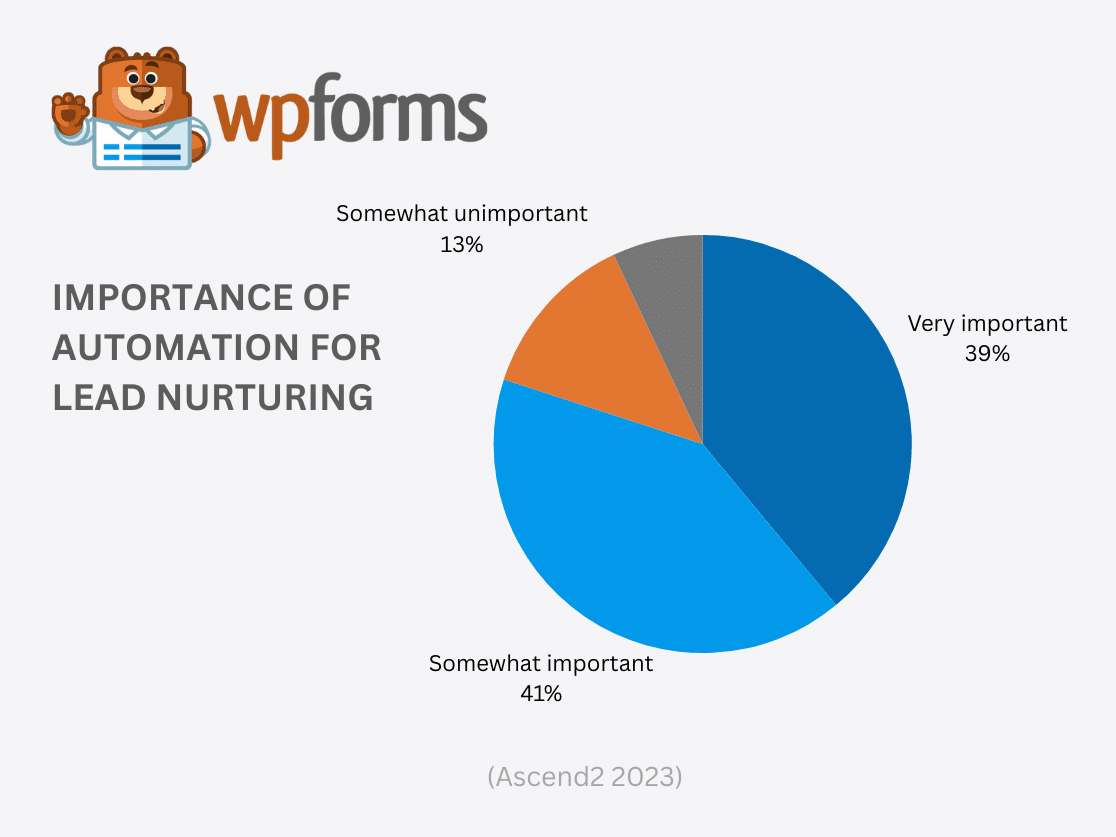
12. 84% of marketers say allocating more time and resources to lead nurturing efforts would improve conversion rates. (Ascend2)
The Influence of Artificial Intelligence on Lead Generation
Artificial intelligence (AI) is reshaping lead generation. In-depth studies and surveys of AI use in lead generation are still limited, but there are some exciting results already available in the form of case studies and anecdotal evidence.
This section explores how AI-driven automation tools and algorithms are being used to predict lead quality, personalize interactions, and automate lead generation processes.
1. 60% of senior executives in leading global sales and marketing organizations believe AI will have a significant impact on lead identification. (McKinsey & Company)
2. 15% of organizations are using AI tools in their content marketing efforts to generate and nurture leads. (Content Marketing Institute)
3. 90% of marketers who use AI say it’s effective for content creation. 67% of marketers use it to create content faster and 50% believe it makes their content better. (Hubspot)
4. 55% of businesses that use conversational AI for lead generation have generated more high-quality leads. (Yellow.ai)
5. Enterprises using AI for lead generation have experienced a 15-20% increase in sales productivity. (SalesFuse)
6. Over 40% of sales leaders using AI lead-generation tools said their lead prioritization, use of their sales team’s time, and understanding of customer needs have improved. (Salesforce)
7. 40% of businesses have planned or are already increasing their investment in AI for lead generation purposes. (Salesforce)
Next, Generate More Leads With WPForms
If you need more tips to generate leads with the forms on your site, check out our article on the best practices for effective lead capture forms. From using multi-step forms to connecting your lead capture forms to your CRM, we’ve packed this guide with actionable advice to help you get more out of your forms.
We’ve also put together some examples of high-converting lead generation forms that will give you some inspiration and ideas to help increase your form conversion rates.
Create Your WordPress Lead Form Now
Ready to build your form? Get started today with the easiest WordPress form builder plugin. WPForms Pro includes lots of free templates and offers a 14-day money-back guarantee.
If this article helped you out, please follow us on Facebook and Twitter for more free WordPress tutorials and guides.
The post 120+ Fascinating Lead Generation Statistics and Trends for 2024 appeared first on WPForms.source https://wpforms.com/lead-generation-statistics-and-trends/

